Disclosure: This article contains affiliate links. We may earn a commission from purchases at no extra cost to you, which helps our travel content.
When I landed in Singapore for my first logistics conference back in 2012, I expected pristine streets and cutting-edge technology. What I didn't anticipate was how this hyper-efficient nation would completely transform my understanding of street food economics. As someone who professionally tracks how goods move across borders, Singapore's hawker centers represent perhaps the most elegant system I've encountered for delivering culinary excellence at accessible price points. These open-air complexes house dozens of specialized food stalls, each perfecting a handful of dishes over generations. The government-regulated spaces ensure hygiene standards while keeping overhead costs low enough that a Michelin-starred meal can cost less than $5 USD. Over my 14 visits to Singapore since then, I've developed a methodical approach to navigating these gastronomic wonderlands that I'm finally documenting here for families looking to experience authentic Singaporean culture without breaking their travel budget.
Understanding the Hawker Center Ecosystem
Hawker centers operate with fascinating systematic efficiency that my logistics-oriented brain finds deeply satisfying. Each center houses between 50-200 individual stalls arranged in numbered rows, typically with a centralized seating area. The current incarnation evolved from the government's 1970s initiative to regulate street vendors by providing proper facilities with running water, electricity, and waste management.
What makes these centers remarkable is their economic model: low overhead costs allow vendors to maintain affordable pricing while specializing in just a few dishes—often a single recipe perfected over decades. This specialization creates a meritocracy where only the truly exceptional survive in categories like chicken rice, laksa, or char kway teow.
During my research visit last March, I interviewed Mr. Tan, a second-generation hawker at Maxwell Food Centre who explained that his family's Hainanese chicken rice stall operates on margins that would be impossible in a traditional restaurant setting. The shared infrastructure costs mean his $3.50 SGD chicken rice plate (about $2.60 USD) remains profitable despite using premium ingredients.
Hawker centers also function as Singapore's great social equalizers. During lunch hours, you'll find executives in bespoke suits sitting alongside construction workers, all enjoying the same high-quality food at communal tables. This democratic dining experience provides visiting families an authentic glimpse into Singaporean daily life that no curated tourist experience can match.
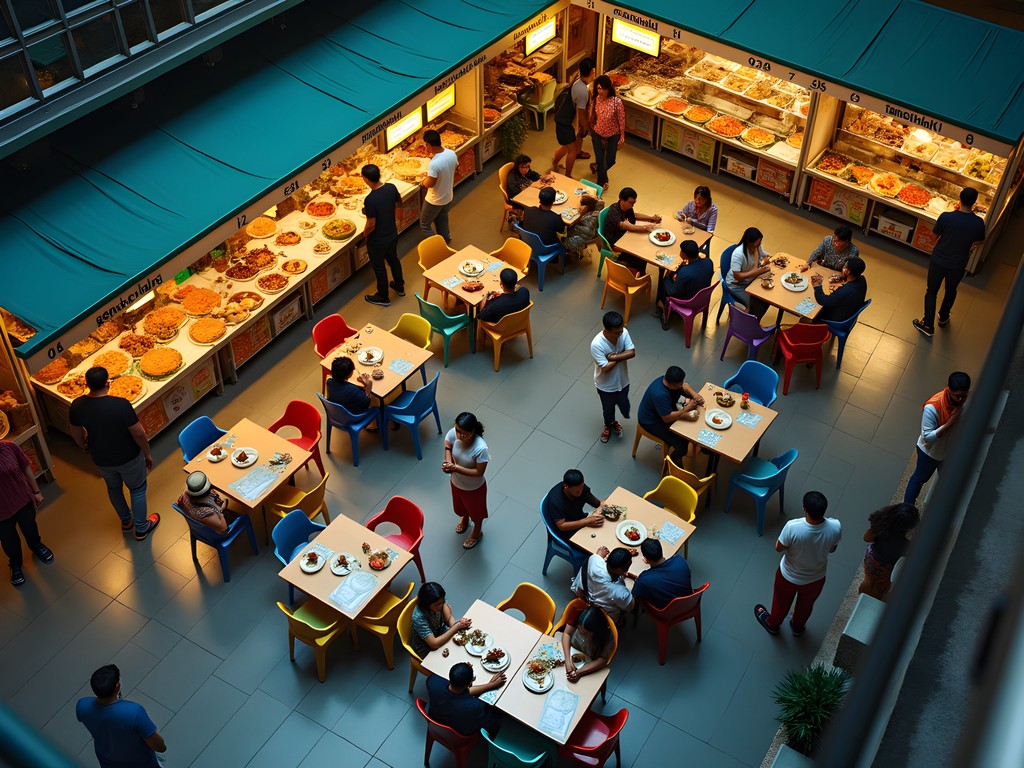
💡 Pro Tips
- Look for the longest queues—they almost invariably lead to the best stalls
- Visit during off-peak hours (2-5pm) for shorter lines and easier seating
- Bring small bills and coins as many stalls don't accept cards
The Essential Hawker Centers for First-Time Visitors
After methodically sampling 24 hawker centers across Singapore over my various visits, I've identified five that offer the optimal combination of accessibility, variety, and authentic quality for families visiting Singapore for the first time:
1. Maxwell Food Centre (Chinatown) This is my standard first stop when introducing friends to Singapore's food scene. With 100+ stalls in a compact, easily navigable layout, Maxwell offers an ideal introduction. Don't miss Tian Tian Hainanese Chicken Rice (stall #10) – the same stall that impressed Anthony Bourdain years ago. For families with children, the chicken rice is approachable enough for cautious young eaters while still delivering authentic flavors.
2. Lau Pa Sat (Downtown/CBD) Housed in a stunning Victorian-era structure, this center combines architectural beauty with excellent food. After 7pm, the adjacent Boon Tat Street transforms into 'Satay Street' where vendors grill skewers over charcoal—a sensory experience that consistently delights children in my experience. The central location makes this an ideal dinner spot after visiting nearby attractions.
3. Old Airport Road Food Centre (Geylang) This is where I bring visitors seeking the most authentic local experience. Located away from tourist areas, it's beloved by Singaporeans for its concentration of 'heritage' stalls. The Nam Sing Hokkien Mee (stall #01-32) represents the pinnacle of this classic noodle dish. When navigating with family, I recommend bringing a portable fan as the ventilation can be limited during peak hours.
4. Chinatown Complex Food Centre Home to Hong Kong Soya Sauce Chicken Rice and Noodle—the world's first Michelin-starred hawker stall—where $3 buys you literally award-winning cuisine. The underground location stays cooler than open-air centers, making it more comfortable for families during midday heat.
5. Tekka Centre (Little India) For culinary diversity, nothing beats Tekka Centre where Chinese, Indian, and Malay vendors operate side-by-side. This provides an excellent opportunity for families to sample multiple cuisines in one meal while experiencing Singapore's multicultural identity in microcosm.

💡 Pro Tips
- At Maxwell, visit Tian Tian Chicken Rice before 11:30am to avoid 30+ minute queues
- Download the 'SGHawker' app to identify stalls with cleanliness certifications
- At Old Airport Road, bring wet wipes as napkins are rarely provided
Must-Try Dishes for Families on a Budget
Singapore's hawker centers offer remarkable value, with most dishes priced between $3-6 SGD ($2.20-4.50 USD). For a family of four, a generous sampling of local specialties rarely exceeds $50 SGD ($37 USD) total—a fraction of restaurant dining costs. Through systematic sampling, I've identified these dishes as offering the optimal intersection of affordability, approachability for younger palates, and cultural significance:
Hainanese Chicken Rice This deceptively simple dish—poached chicken served with fragrant rice cooked in chicken stock—represents Singapore's national dish. The accompanying chili sauce can be added gradually, allowing children to customize spice levels. Best value: Tian Tian at Maxwell ($3.80 SGD) or Ming Kee at Bishan ($4 SGD).
Char Kway Teow Flat rice noodles stir-fried with dark soy sauce, Chinese sausage, and bean sprouts. The slightly sweet profile makes this a reliable choice for children while still delivering authentic flavors. Hill Street Char Kway Teow at Bedok ($4 SGD) consistently executes this dish with technical precision.
Roti Prata with Curry This Indian-influenced flatbread is endlessly fascinating for children to watch being made as vendors dramatically stretch and flip the dough. The plain version paired with mild curry provides a gateway to more adventurous eating. Mr. Mohgan's Super Crispy Roti Prata (Joo Chiat) offers the perfect textural contrast at $1.20 per piece.
Kaya Toast Set Singapore's traditional breakfast of toast with coconut jam, soft-boiled eggs, and coffee/tea offers familiar components presented in a novel way. Ya Kun Kaya Toast chain ($4.50 for a set) maintains consistent quality across multiple locations.
Chendol This shaved ice dessert topped with green rice flour jelly, coconut milk and palm sugar provides welcome relief from Singapore's humidity. At $2-3 per bowl, it's an affordable treat that consistently delights younger travelers.
For families tracking expenses, I recommend the travel expense tracker to manage daily food costs. I've found the dedicated cash envelope system particularly useful for hawker center dining where cash remains king.
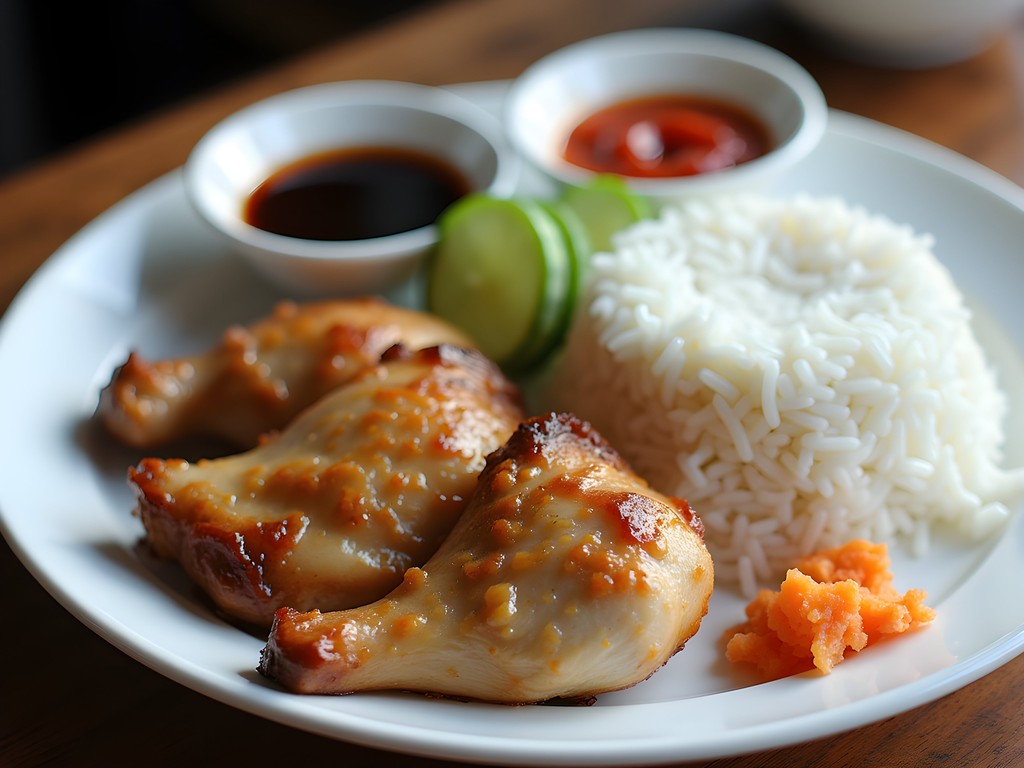
💡 Pro Tips
- Order dishes to share family-style to sample more varieties
- Look for NEA 'A' cleanliness ratings displayed at stalls if you have concerns
- Ask for 'less spicy' ('kurang pedas') when ordering dishes for children
Navigating Hawker Centers with Children
Having accompanied several colleagues with their families during Singapore visits, I've developed a systematic approach to hawker center dining with children that maximizes enjoyment while minimizing potential friction points:
Timing Strategy Singapore's hawker centers operate on predictable crowd patterns. For families, I recommend visiting during these optimal windows: - Breakfast (7:30-9:00am): Serene atmosphere with specialty breakfast stalls open - Late lunch (1:30-3:00pm): After the office lunch rush subsides - Early dinner (5:30-6:30pm): Before evening crowds arrive
These timeframes ensure easier table acquisition and shorter queues—critical factors when dining with impatient young travelers.
The 'Chope' System Singaporeans use a unique table reservation system called 'chope' where small items (tissue packets, umbrella, etc.) are placed on tables to reserve them. For families, I recommend designating one adult to secure seating while another handles food ordering. This prevents the frustration of holding food with nowhere to sit.
Hydration Considerations Singapore's humidity demands consistent hydration, particularly for children. Most centers have dedicated drink stalls selling fresh fruit juices, sugar cane juice, and local beverages like bandung (rose syrup with milk). I always carry a insulated water bottle that keeps water cold for hours in Singapore's heat.
Navigating Food Sensitivities For families with dietary restrictions, I've compiled this quick reference: - Vegetarian options: Look for Indian stalls with 'vegetarian' signs or Chinese Buddhist vegetarian stalls - Halal requirements: Many centers have dedicated halal sections; look for the halal certification displayed - Gluten concerns: Rice-based dishes (chicken rice, nasi lemak) are generally safer options
Engaging Children in the Experience Transform the hawker center visit into an educational opportunity by creating a 'food passport' where children can collect stamps or stickers for each new dish tried. This gamification approach has proven remarkably effective at encouraging culinary exploration among the children of my colleagues. The sensory immersion—watching noodles being hand-pulled or dough being flipped—naturally captivates younger visitors in ways that conventional restaurants cannot match.
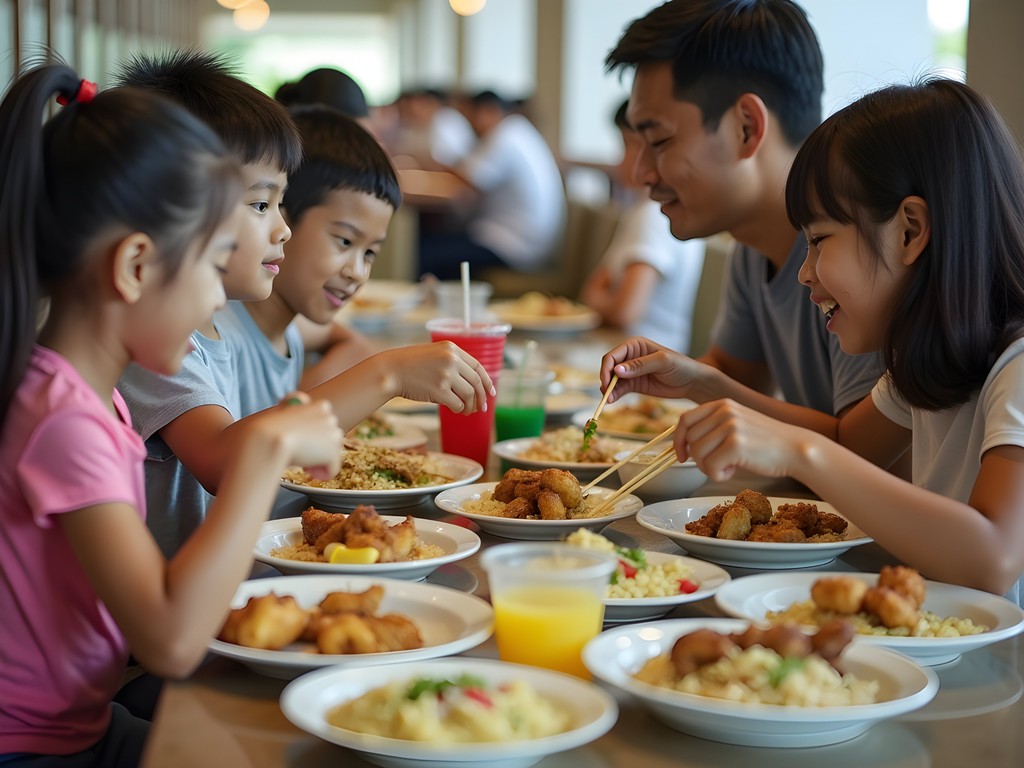
💡 Pro Tips
- Carry hand sanitizer and wet wipes as table cleaning between diners is minimal
- Create a designated meeting point in case family members get separated
- Consider bringing booster seats for very young children as high chairs aren't available
The Technology Behind Singapore's Hawker Culture
As someone fascinated by the intersection of technology and cultural preservation, I've been tracking Singapore's systematic digitization of its hawker heritage. During my most recent visit in February, I conducted field research on how technology is transforming this traditional dining ecosystem:
Digital Payment Integration While cash remains dominant, Singapore's government has been aggressively promoting cashless payments through its 'Smart Nation' initiative. Approximately 40% of hawker stalls now accept digital payments through: - PayNow QR codes (Singapore's unified payment QR system) - Mobile wallets like GrabPay and DBS PayLah! - Contactless bank cards
This transition represents a fascinating case study in how traditional micro-enterprises adapt to digital economies. For travelers, I recommend downloading the Singapore PayNow app before arrival and linking it to a travel credit card with no foreign transaction fees to maximize convenience.
Heritage Preservation Through Documentation In 2020, Singapore's hawker culture received UNESCO Intangible Cultural Heritage recognition—a designation that catalyzed several technological preservation initiatives:
-
The National Heritage Board's 'Hawker Stories' digital archive now contains over 3,000 documented recipes and oral histories accessible through QR codes displayed at many stalls.
-
The Hawker Centre 3.0 Committee has implemented IoT sensors in newer centers to optimize ventilation systems based on real-time temperature and humidity data—a technological solution to the traditional complaint about hawker center heat.
-
Virtual reality experiences at the National Museum of Singapore allow visitors to 'apprentice' with master hawkers through immersive simulations.
During my technical evaluation of these systems, I was particularly impressed by the integration of tradition and innovation at Hawker Centre 3.0 pilot locations like Ci Yuan Hawker Centre, where automated tray return systems and centralized dishwashing operations have increased operational efficiency without compromising food authenticity.
For families with tech-interested teenagers, I recommend visiting the recently opened Hawker Culture Gallery at the Singapore Food Agency building, where interactive exhibits demonstrate the engineering challenges behind maintaining food safety in open-air environments through computational fluid dynamics models of airflow and thermal regulation.
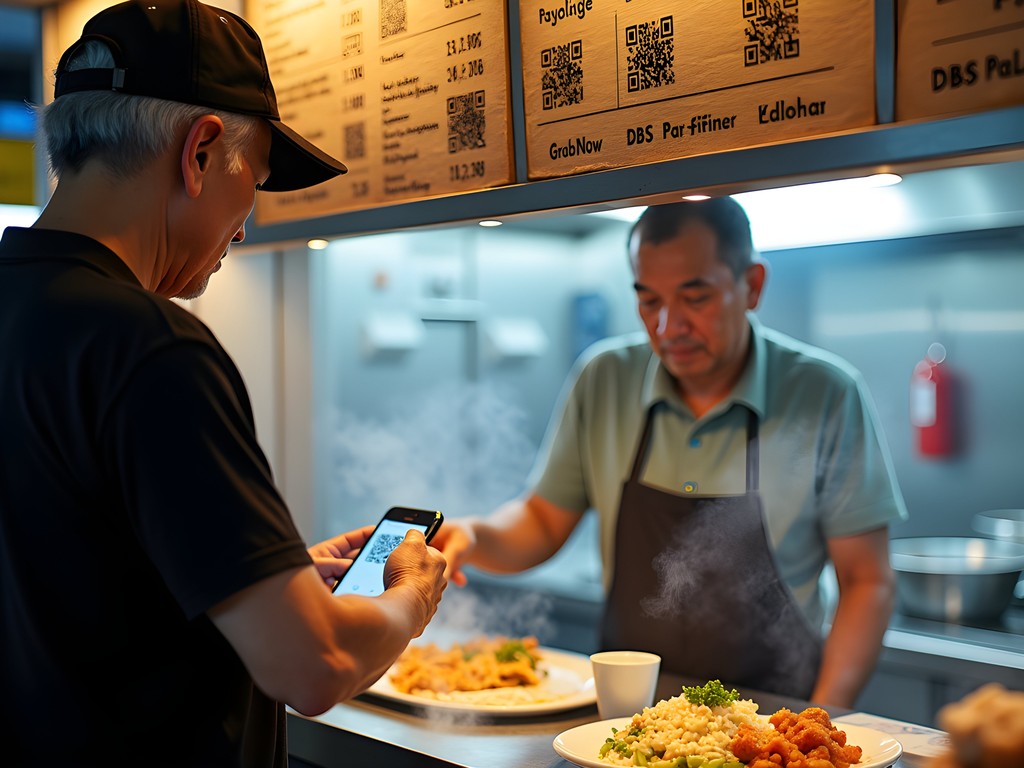
💡 Pro Tips
- Download the 'Makan Buddy' app for English translations of hawker stall menus
- Look for the Heritage Hawker designation that identifies stalls operating for 30+ years
- Visit the Hawker Culture Gallery on Wednesdays for free guided tech tours
Final Thoughts
Singapore's hawker centers represent a remarkable convergence of culinary excellence, cultural preservation, and economic accessibility that continues to evolve in the digital age. For families visiting Singapore, these vibrant food hubs offer not just affordable meals, but windows into the authentic daily life of this multicultural nation. My systematic exploration of these centers over the years has convinced me that there's no more efficient way to experience Singapore's diverse heritage than through its hawker food culture. As you plan your family's culinary adventure, remember that each dish tells a story of migration, adaptation, and innovation—much like Singapore itself. I'll be returning next quarter to document the opening of the new Jurong Innovation District hawker center with its experimental smart-cooling system. Until then, bring your curiosity, your appetite, and perhaps most importantly, your sense of adventure to these remarkable institutions that feed a nation.
✨ Key Takeaways
- Singapore's hawker centers offer Michelin-quality food at budget prices suitable for family dining
- Visit during off-peak hours (1:30-3pm, 5:30-6:30pm) for the best experience with children
- The five essential centers for first-time visitors are Maxwell, Lau Pa Sat, Old Airport Road, Chinatown Complex, and Tekka Centre
📋 Practical Information
Best Time to Visit
year-round
Budget Estimate
$30-50 SGD per day for food (family of four)
Recommended Duration
1-week
Difficulty Level
Beginner

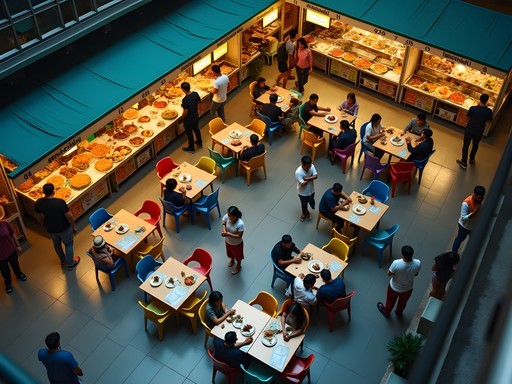
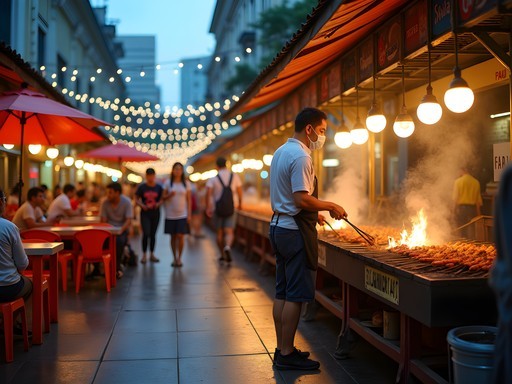
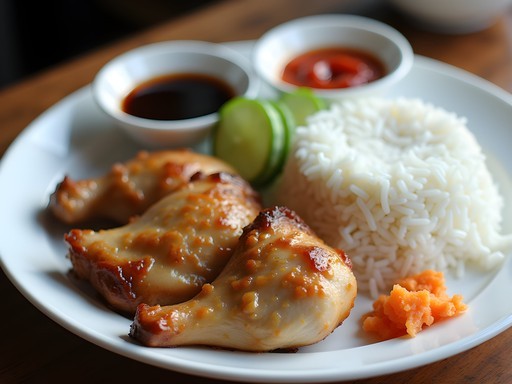




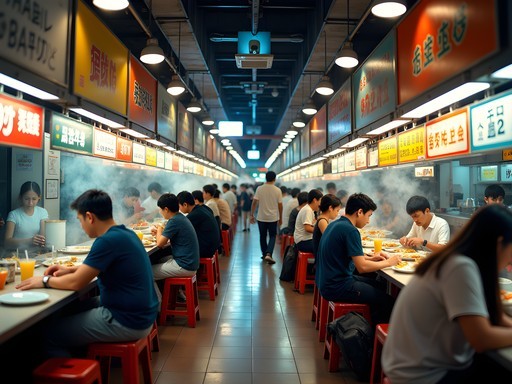
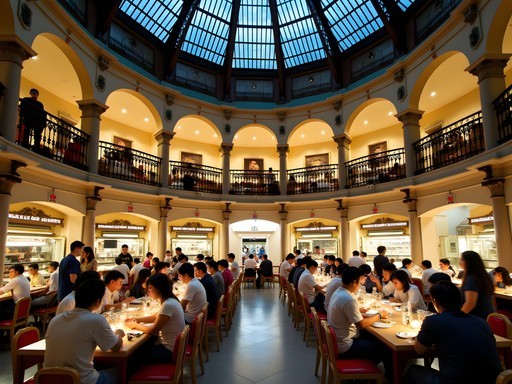
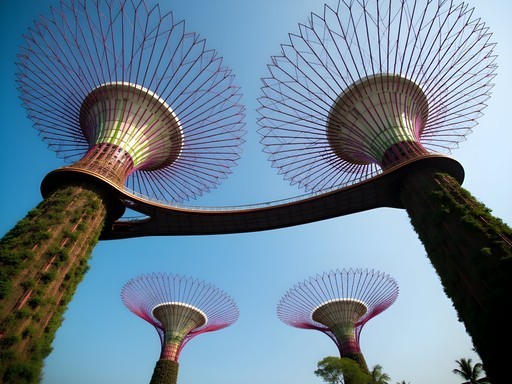


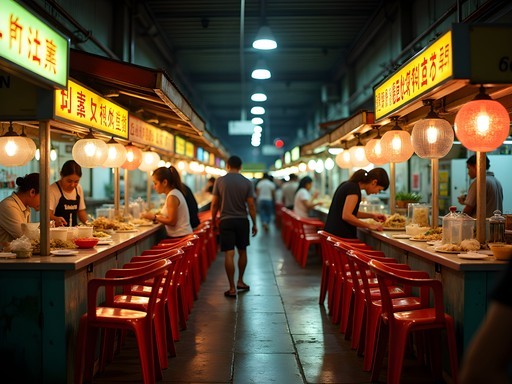
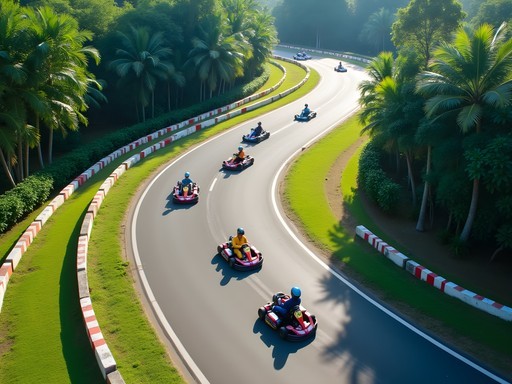

Comments
smartlife
Pro tip: download the Hawker Centre app before you go. Shows which stalls are open and has ratings from locals.
reddiver
Just got back from Singapore and used this guide EXTENSIVELY! The chicken rice at Maxwell Food Centre was life-changing. We went back three times! Your budget tips saved us so much money - we ate like kings for under $10 per person most meals. THANK YOU!!!
Zara Duncan
So happy to hear that! Maxwell's chicken rice is legendary for good reason. Did you try the chili crab anywhere?
reddiver
Yes! Splurged on chili crab at East Coast Seafood Centre on our last night. Expensive but worth every penny!
photolover
Love the photos! Those satay skewers are making me hungry!
wanderguide
Right? I can almost smell the char from here! The satay at Lau Pa Sat's Satay Street is incredible after dark.
photolover
Adding that to my list! Going to Singapore next month and I've been making notes from this post. Did you find it easy to navigate with just English?
wanderguide
Super easy! Almost everyone speaks English, and most stalls have English menus or at least pictures. If you're hesitant, just look for the longest lines - that's where the good food is! I carried a small phrase book but barely needed it.
Jean Wells
Excellent breakdown of the hawker center ecosystem, Zara. Having lived in Singapore for 3 years before moving to Japan, I'd add that the government's recent UNESCO heritage preservation efforts have really helped maintain these cultural institutions. One tip for budget travelers: hawker centers near business districts tend to increase prices during lunch hours (11:30-1:30), so timing your visits can save you a few dollars. Also worth noting that many hawkers close one day per week, typically displayed on small signs at their stalls. Old Airport Road remains my favorite for its sheer variety and authenticity - their rojak and hokkien mee are superior to the more touristy locations.
Douglas Bradley
Excellent guide, Zara! Having researched Singapore's hawker culture for my own blog, I appreciate your focus on navigating these spaces with children. The UNESCO recognition of Singapore's hawker culture in 2020 was well-deserved. One aspect I find particularly fascinating is how the government has implemented succession programs to preserve these culinary traditions as older hawkers retire. For those concerned about hygiene (a common worry I hear from Western travelers), look for the grading system displayed at each stall - 'A' being the highest. I've found that even 'B' rated stalls maintain excellent standards. For first-timers overwhelmed by choices, I recommend joining one of the free walking tours that include hawker center visits - they provide cultural context that enhances the experience tremendously.
photolover
Are those walking tours really free? Which one would you recommend?
Douglas Bradley
Yes, Singapore offers several free tours through their tourism board, though they appreciate tips. I took the Chinatown one that included Maxwell Hawker Centre. There's also a paid tour by Wok 'n' Stroll that's specifically food-focused if you're serious about diving deep into the cuisine.
wanderguide
This post brings back so many memories! I spent a month in Singapore last year and practically lived at hawker centers. Maxwell Food Centre became my second home - the Tian Tian Hainanese Chicken Rice is absolutely worth the hype and the queue. One tip I'd add for families: most centers have designated 'no alcohol' sections which tend to be quieter and more kid-friendly. Also, don't miss the dessert stalls! The ice kachang at Chomp Chomp was my daughter's favorite thing in all of Singapore.
Douglas Bradley
Completely agree about Maxwell! Did you try the clay pot rice there? I found it fascinating how each hawker center seems to have its own distinct personality and specialty dishes.
wanderguide
Yes! The clay pot rice was amazing. And you're right about each center having its own vibe. Old Airport Road felt more local to me, while Lau Pa Sat had more tourists.
Hannah Woods
What I find fascinating about Singapore's hawker centers is how they represent a perfect balance between governmental regulation and authentic food culture. The hygiene standards are strictly enforced (note those cleanliness grades displayed at every stall), yet the food remains authentic and affordable. I've been tracking the prices at hawker centers over my last three visits (2018, 2020, and 2022), and while there has been some inflation, a meal still costs a fraction of what you'd pay in a restaurant. This accessibility is becoming increasingly rare in other major food destinations. One observation I'd add to Zara's excellent guide: the hawker centers are also incredible places for solo travelers. I've had some of my most memorable conversations with locals while sharing tables. The communal seating arrangement practically forces cultural exchange!
hikingwalker
Are hawker centers air conditioned? Singapore heat worries me a bit.
smartlife
Most aren't fully air-conditioned, but they have good ventilation with lots of fans. I found Chinatown Complex has some air-con sections. Bring a portable fan - total lifesaver for me!
Savannah Torres
This guide is spot on! We visited Singapore with our kids last summer and the hawker centers were the highlight of our trip. My 7-year-old became obsessed with Hainanese chicken rice (we had to find it 3 times!) and my husband couldn't get enough of the char kway teow. One tip for families I'd add: bring a small pack of wet wipes and maybe a bib for younger kids. Things can get messy with all that delicious soup and sauce! Also, we found going slightly earlier than peak lunch (around 11:30am) meant shorter queues at the popular stalls and easier to find seating. The "Navigating Hawker Centers with Children" section was super helpful - we used the strategy of one parent grabbing seats while the other ordered. Worked like a charm!
Zara Duncan
Great tip about the timing, Savannah! 11:30am is definitely the sweet spot. And yes to wet wipes - essential hawker center gear!
oceanguide
YES!!! Singapore hawker centers are THE BEST! I still dream about the laksa I had at Tekka Centre! The spice level nearly killed me but I couldn't stop eating it! 🔥🔥🔥 And so cheap compared to restaurant prices. I used my pocket guide to find some hidden gems in the neighborhoods too. Great post Zara!
Venture X
Premium card with 2X miles, $300 travel credit, Priority Pass